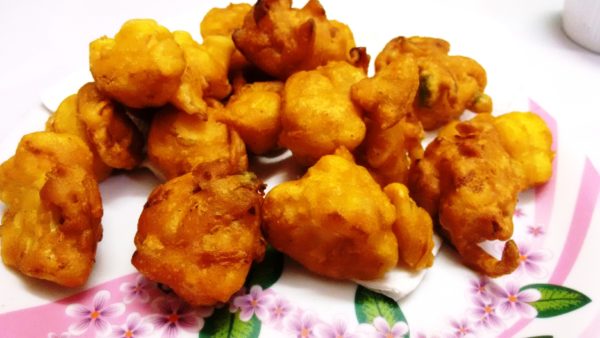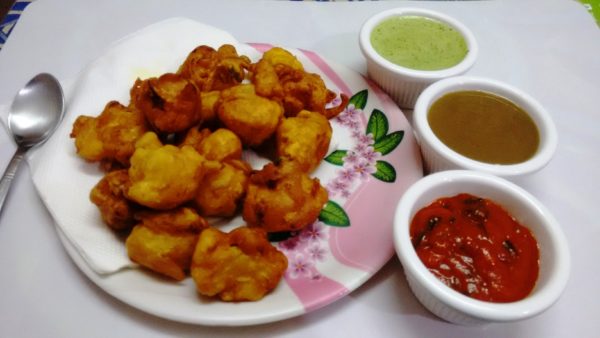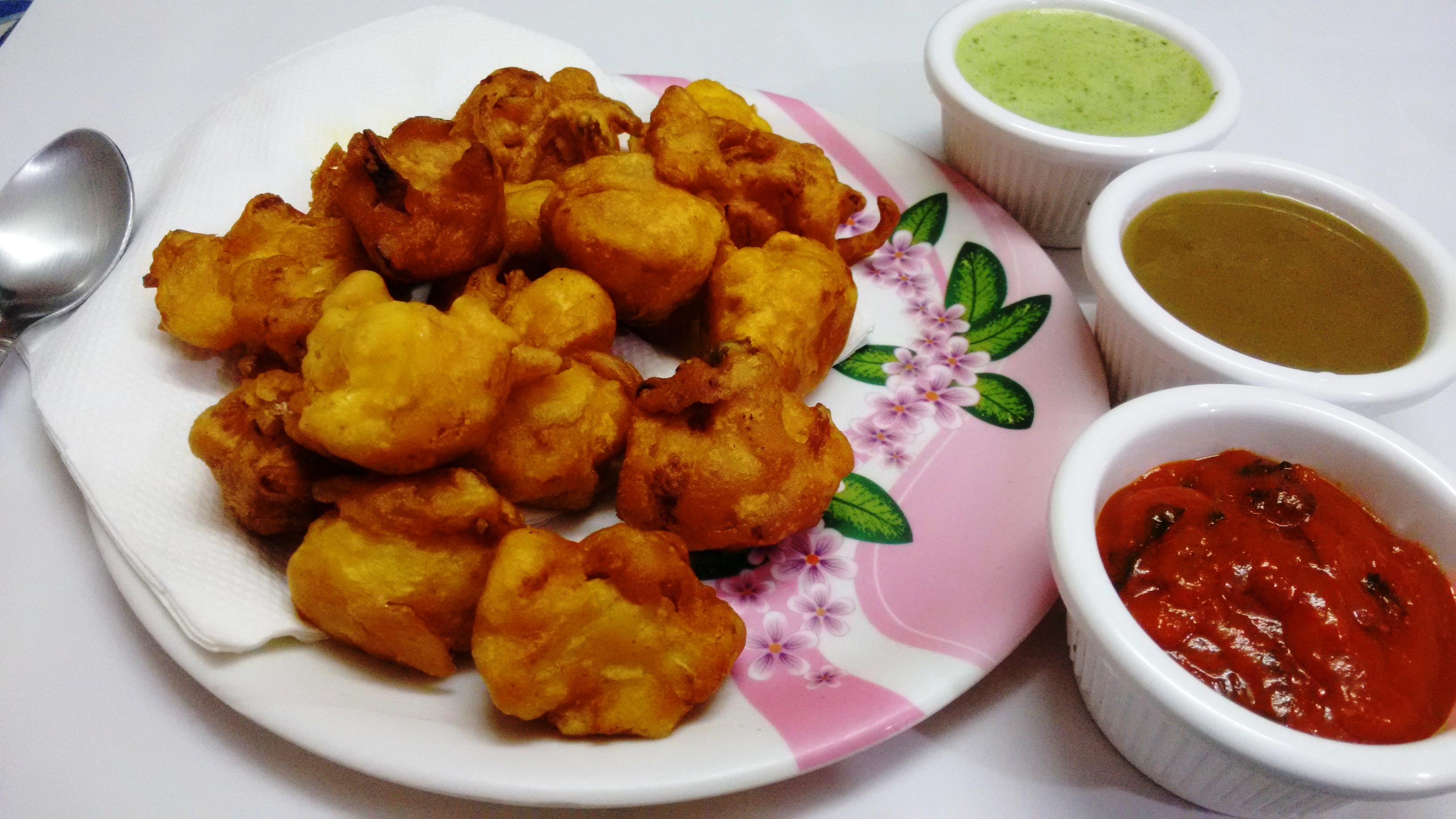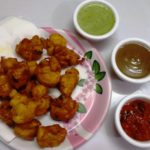Pakoda is one of the favourite tea time snacks in most of the Indian homes. Different people like different types of pakodas. Monsoon is here and preparing pakodas at home in the evening hours is very common. The basic of making the pakodas of all types are similar. Besan (Gram Flour) is common in all of them. There are number of vegetables which are used to prepare pakodas, such as Potato, Paneer, Onion, Methi, Cauliflower, etc.
Today I am sharing the recipe of Gobi Pakoda. Gobi is first of all boiled and mixed with besan and then finally fried in oil. It can be served with chutney or sauce together with hot tea. It is easy to prepare and is ready to serve snacks for guests in most Indian homes.
For other Pakoda recipes, please visit
Gobi Ke Pakode/Cauliflower Bites
Today I am sharing the recipe of Gobi Pakoda. Gobi is first of all boiled and mixed with besan and then finally fried in oil. It can be served with chutney or sauce together with hot tea. It is easy to prepare and is ready to serve snacks for guests in most Indian homes.
Servings 4 servings
Calories
Ingredients:
- 1 cup Gram Flour (Besan)
- 250 gm Cauliflower (Gobi)
- 2 medium Chopped Green Chilli
- 1/2 teaspoon Chilli Powder
- 1/2 teaspoon Turmeric Powder
- 1/2 teaspoon Carom Seeds (Ajwain)
- 1 tablespoon Chopped Coriander Leaves (Dhania)
- A pinch Baking Soda
- A pinch Hing (Asafoetida)
- Salt to Taste
- Oil to Deep fry
- Water to make paste
Instructions:
- Take the cauliflower, cut them into small pieces or medium sized florets and wash them properly with water.
- Now heat water in a pan, add salt and put all the florets into it. Allow it to boil for 5 minutes.
- Switch off the flame after 5 minutes and let the florets be immersed in the hot water for 10-15 minutes.
- Take out the Gobi from the water and keep it aside in a large bowl.
- Take Gram Flour (Besan) in a large bowl.
- Add Chopped Chillies, Coriander leaves, Chilli Powder, Turmeric Powder, Baking Soda, Ajwain, Hing and Salt to the besan. Mix it.
- Add water in phase by phase to the mixture and mix all the ingredients by stirring it to make a thick batter.
- After the batter has been mixed properly, add cauliflower and mix it so that it gets completely coated with the gram flour batter.
- Heat oil in a kadai over medium flame. To check whether the oil is heated or not, place a drop of batter to the oil. If it floats on the surface that means the oil has been heated properly.
- Now drop the Gobi coated with besan into the oil gently one by one. At a time fry 5-6 pakodas. You can fry more pakodas depending upon the size of the kadai.
- Fry the pakodas till they turn into golden brown in colour. Keep the pakodas stirring so that it doesn’t burn and is cooked evenly.
- Take out the pakodas from the oil in a plate. Place it over paper towel to absorb excess oil.
- In the same manner fry the remaining florets. Take them out in a plate.

- Spicy, Delicious, Hot and Crunchy Gobi Ke Pakode is ready to be served. Serve it with Green Chutney or Tomato Ketchup with Hot Tea in addition.

Notes:
- Add water to the mixture little by little, so that the consistency of the paste remains proper and the florets are easily coated with it.
- Fry the pakodas over medium flame. If you cook over low flame, the pakodas will absorb more oil. Frying in high flame will also not cook properly from inside.
- Cauliflower florets can be coated with the besan before adding it to the oil. In this case skip step 8. When the oil is heated, take the florets one by one and coat it with besan and drop it into the oil.
- While boiling Gobi we must keep in mind that it should be properly boiled. It should not be boiled less nor more. The taste may change if it is not boiled optimally.









2 Comments
Madhuri Rastogi
(March 30, 2018 - 8:50 am)Pakoda is my favourite evening snacks. Keep posting different types of Pakoda. Thank U.
Recipe by Chits
(March 30, 2018 - 9:49 am)Sure